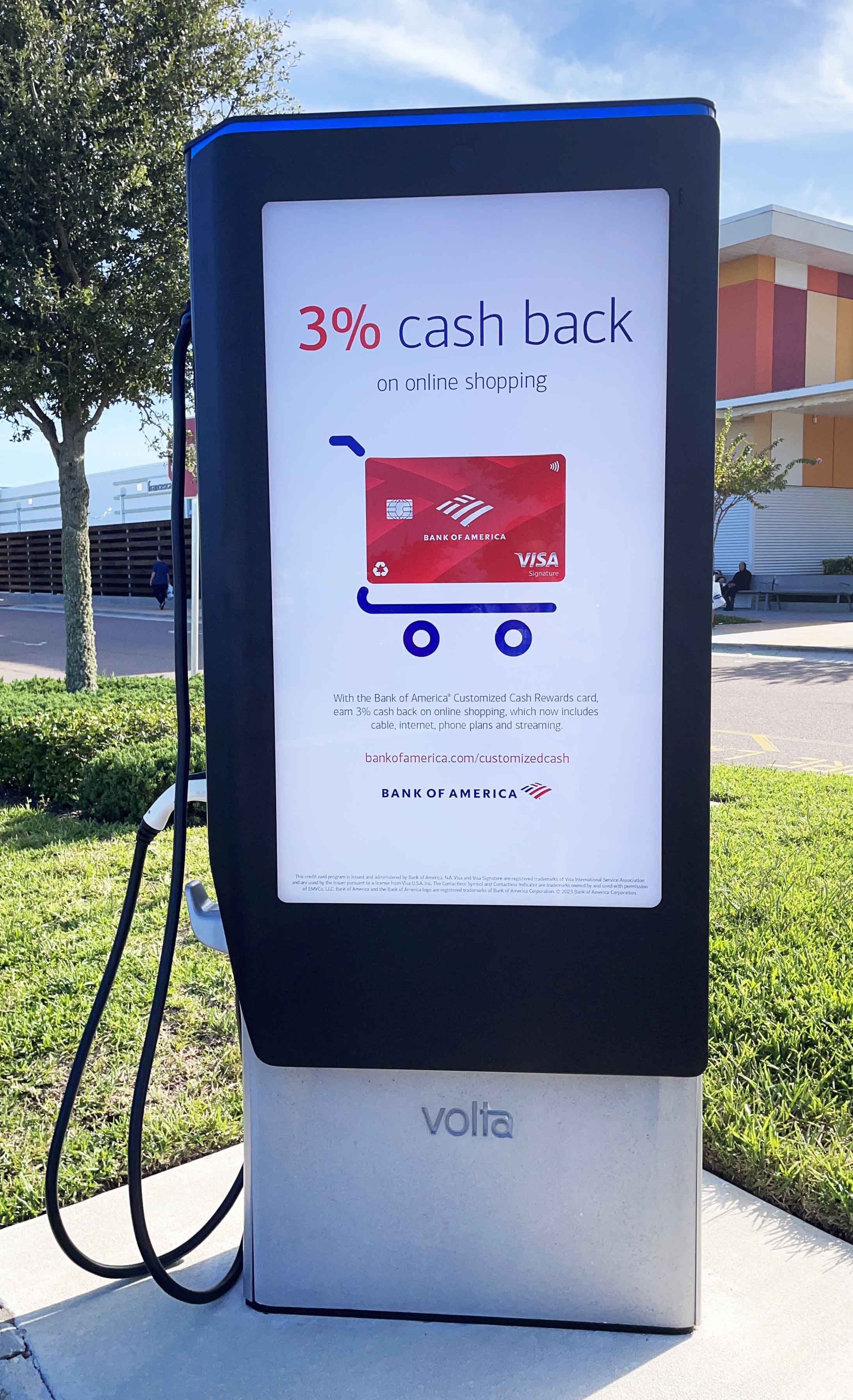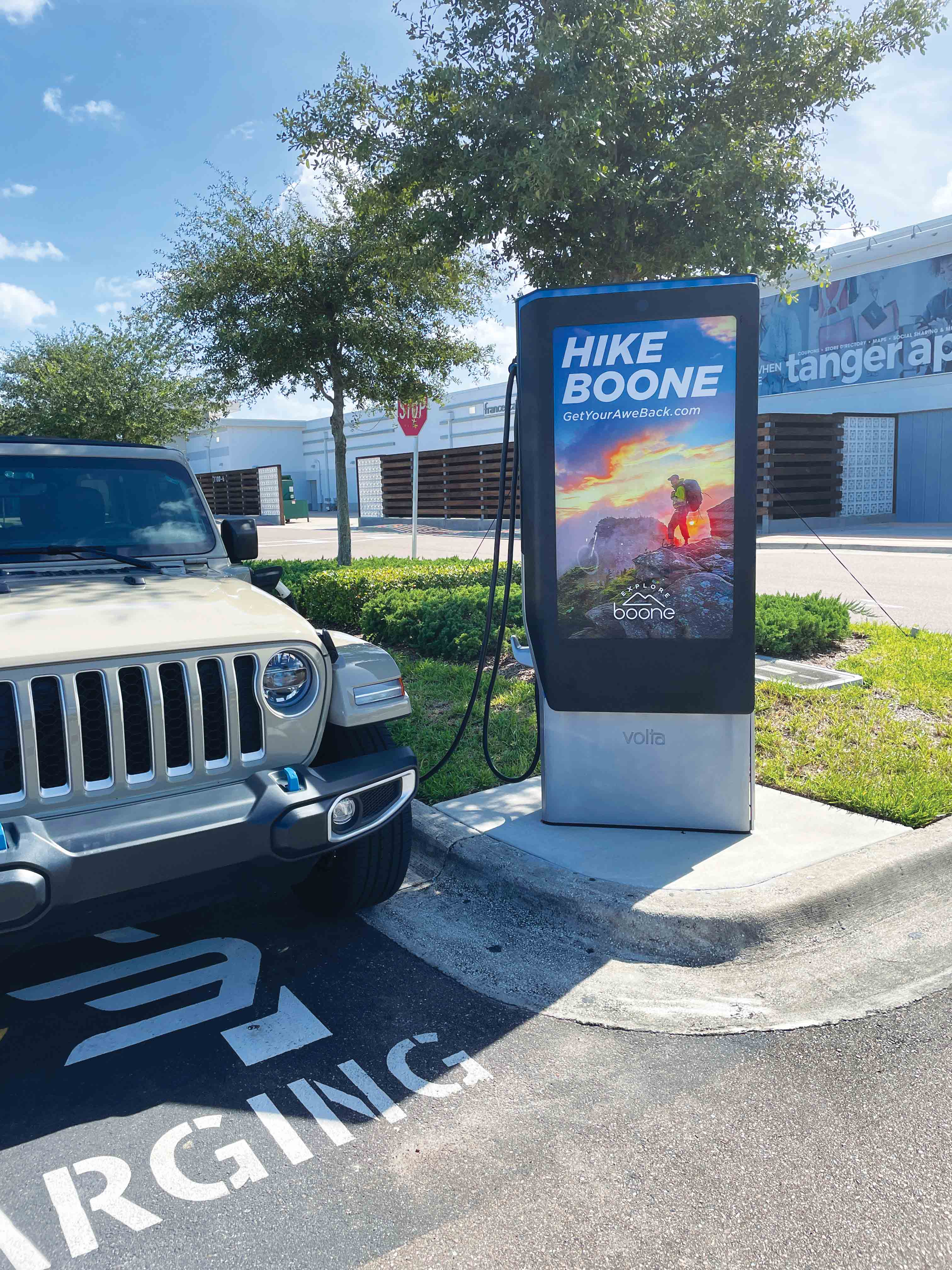Integrators: Ready for Plug-In Possibilities?
How the booming EV charger market can spark opportunities for the Pro AV industry.

Last October, Precedence Research reported the global electric vehicle (EV) charger market was valued at $9 billion in 2022, and expects it to grow to more than $105 billion by 2032. With numbers like that, getting into the market now could create significant returns for integrators in the near future and beyond.

“For integrators willing to dive in and learn the ins and outs of deploying chargers and charging networks, the trend presents a host of new revenue opportunities just waiting to be taken advantage of,” said Catherine Lee, product marketing specialist at Broadsign.
Governments worldwide are promoting the adoption of electric vehicles through various incentives, subsidies, and regulatory measures, including the development of a more robust charging infrastructure. “Integrators who align their services with a government-backed program can benefit from the increased demand and potential financial incentives,” said Jay Park, senior manager of business innovation with LG.

As consumers continue to transition to electric vehicles and federal funding increases support, it’s a great market space for integrators—and you may even have current clients looking for these services. “This surge in demand for EVs directly translates to an increased need for EV charging infrastructure,” Park added. “Integrators can tap into this growing market to provide essential services and solutions.”
[The Integration Guide to Digital Signage 2023]
Power Levels

EV charging infrastructure is more comprehensive than just public charging stations, and there is a growing need for solutions in various commercial, industrial, and residential sectors. These opportunities allow integrators to diversify their offerings, providing increased value to clients by staying on top of evolving EV charging technology, including faster charging speeds, wireless charging, and smart charging solutions. “As more and more EVs are on the road, real estate owners will likely want to invest in charging infrastructure at their locations, and they’ll need industry-savvy partners to facilitate these projects,” said Lee.
Power is a prime consideration when learning the ins and outs of the EV charging business, and you will often hear EV chargers referred to by level. Level 1 is the basic 120-volt charger, which is available in many consumer home chargers and only charges about 2-5 miles per hour. Level 2 increases to 240 volts to deliver 10-65 miles per hour. You'll find them in kiosk solutions at local grocery stores, libraries, and municipalities. Level 3 (also known as DC fast chargers) are appearing more frequently in the market, but require increased power to charge vehicles 3-30 miles per minute. These chargers are in demand by convenience stores and gas stations looking for fast charging options that still allows consumers time to purchase items in their stores.
A daily selection of the top stories for AV integrators, resellers and consultants. Sign up below.

There are two types of chargers often seen on the market. One is more basic, resembling a parking meter, while the other integrates display technology for advertising and payment. That's where an AV integrator's digital signage expertise comes in handy. EV charger installations have some similarities to digital menu boards and kiosks, but can be more complicated with power and network capabilities.
With these complicating factors, a site survey is an ideal starting point for the installation, assessing the client’s preferred location when considering various factors. Integrators must also consider proximity to the power source, accessibility, and compliance with local regulations when establishing the ideal charger location.
The integrator is also responsible for permitting needs. “Permits and regulatory requirements should be researched thoroughly as they differ from region to region,” said Lee.
Display Considerations
As outdoor appliances, EV chargers must be durable and include weather-resistant displays that can withstand rain, snow, extreme temperatures, UV radiation, and other weather conditions. Sunlight readability is also crucial; in the daytime, low-brightness displays with poor readability could discourage usage, which won't help impressions for advertisers. Durability and longevity are also critical. "If the screens fail within a year or two years, that's an issue," said Park.

EV chargers with integrated displays can even add a bump in security. "One of the key things that people forget is that an outdoor digital display provides a lot of light," explained Andrew Catellier, senior business development manager with Samsung. "Therefore, it provides safety and security around it."
Users of EV chargers prefer charging stations along their regular routes, making shopping centers, gas stations, and restaurants prime locations for incorporating units. High-traffic areas, including urban centers, airports, and public parking lots can maximize charging infrastructure utilization and benefit from attracting EV users to their locations through strategic charging placement.

USSI Global recommends placing EV chargers in a prime location at a garage or strip mall entrance. "That's kind of the experience people are looking for, rather than having range anxiety driving around looking for the EV charging," said Ted Korte, vice president of programs and innovation lab at USSI Global.
Consumers could also see more corporate entities installing EV chargers in workplace parking lots for convenient charging while their employees work, minimizing the impact on their daily schedules. "Similarly, residential and public charging stations near shopping or recreational area facilities allow people to charge their vehicles while engaging in other activities," Park added.
Content, Content, Content

When surveying the best location, you'll want to find a spot that is not only easy for cars to charge but can also be seen from the street, increasing the ROI for potential advertisers. "This is one of the reasons why the most popular EV we have is the back-to-back, where there's a display on two sides," said Chuck Lewis, executive vice president with Palmer Digital Group. "One display is facing out in the street, where those passing by can take a look, and the other display is facing the person who's charging their car."
Many EV charging networks are supported by advertising revenue, and chargers can help prioritize advertising for the user and those passing by the unit. However, it’s important to vary the content. News, weather, and more can improve user engagement.
USSI Global recommended providing relevant, contextual content to engage people more with the display. "You get all that relevant and contextual information out to them, then allow them to take it on their phone if it interests them. It's that handoff to be that first mover of information to get it on your phone," said Korte.

Regarding content management, media players can be integrated into the charger design or external players can be utilized. Some integrators are turning to IP broadcast networks to reliably and efficiently push content to units. Using the new ATSC 3.0 broadcast standard (also called NextGen TV), content managers can simultaneously update every EV charger, as well as other digital signage displays, on the network. "I love the broadcast datacast to get a ton of people or content out to the displays without breaking the bank," Korte noted.
As the EV industry continues to expand, IoT and AI will have a massive role in the future development of EV chargers. For example, AI can help manage content, playing relevant ads and more to people at the ideal time to make it as contextual and relevant as possible. “Certain things can happen as you pull up," Catellier offered. "Maybe it already knows who you are, or once you plug your car in, it will immediately start charging your account."
[Editorial: Is Your Digital Signage as Good as DFW's Restroom?]
Future innovations with EV chargers can seem endless, but integrators must find how they fit in while the market is still young. "I think the right thing to do is work with the customers, the EV car charging industry, and create your niche," said Catellier. "We suggest it’s time for those interested to begin the ride or risk being left in the dust."
Jennifer is a freelance writer and marketing consultant based in the New York City area. Within the AV industry, Jennifer loves to explore how technology can alter the world around us, creating immersive experiences unlike any other. She has years of experience working with AV integrators, manufacturers, and event production companies in developing engaging content to increase their overall awareness.

